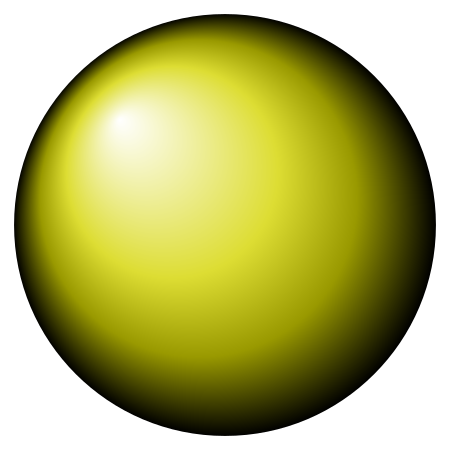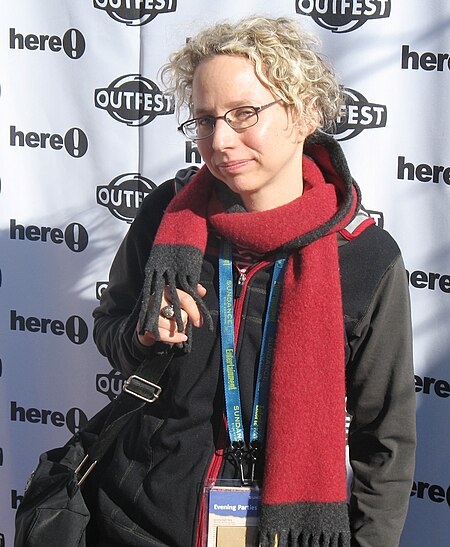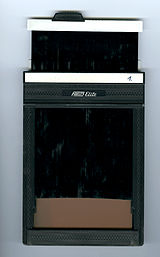Sheet film
|
Read other articles:

Rural municipality in Saskatchewan, Canada See also: Kinistino Rural municipality in Saskatchewan, CanadaKinistino No. 459Rural municipalityRural Municipality of Kinistino No. 459Location of the RM of Kinistino No. 459 in SaskatchewanCoordinates: 53°05′56″N 104°55′01″W / 53.099°N 104.917°W / 53.099; -104.917[1]CountryCanadaProvinceSaskatchewanCensus division15SARM division5Formed[2]December 11, 1911Government[3] • ReeveVance…

此條目需要补充更多来源。 (2021年7月4日)请协助補充多方面可靠来源以改善这篇条目,无法查证的内容可能會因為异议提出而被移除。致使用者:请搜索一下条目的标题(来源搜索:美国众议院 — 网页、新闻、书籍、学术、图像),以检查网络上是否存在该主题的更多可靠来源(判定指引)。 美國眾議院 United States House of Representatives第118届美国国会众议院徽章 众议院旗帜…

Richard JamesonRichard JamesonBornc.1953Portadown, County Armagh, Northern IrelandDied(2000-01-10)10 January 2000PortadownBuriedTartaraghan Parish churchyardAllegianceUlster Volunteer ForceRankBrigadierUnitMid-Ulster BrigadeConflictThe Troubles Richard Jameson (c. 1953 – 10 January 2000), was a Northern Irish businessman and loyalist, who served as the leader of the paramilitary Ulster Volunteer Force's (UVF) Mid-Ulster Brigade. He was killed outside his Portadown home during a feud with t…

The Sacred Riana: BeginningPoster filmSutradaraBilly ChristianProduserMuhammad HanantoDitulis olehBilly ChristianAndy OesmanPemeranRiana AntoinetteAura KasihAgatha ChelseaPrabu RevolusiCitra PrimaFrislly HerlindPenata musikAndi RiantoSinematograferAsep KalilaPenyuntingKelvin NugrohoPerusahaanproduksiNant EntertainmentTanggal rilis 14 Maret 2019Durasi111 menitNegara IndonesiaBahasaBahasa IndonesiaPendapatankotor4.5 miliar rupiah The Sacred Riana: Beginning adalah film horor Indonesia yang d…

Pino Zac (a sinistra) e François Périer nel film Vogliamo i colonnelli Pino Zac, pseudonimo di Giuseppe Zaccaria (Trapani, 23 aprile 1930 – Fontecchio, 25 agosto 1985), è stato un fumettista, regista e animatore italiano. Indice 1 Biografia 1.1 Il periodo giovanile 1.2 Gli anni '60 e '70: Tra cinema d'animazione e riviste francesi 1.3 1977-1985: Dalla rivista Il Male a L'Anamorfico 1.4 Dopo la morte 2 Libri, giornali 3 Televisione 4 Filmografia 4.1 Regista 4.1.1 Lungometraggi 4.1.2 Cortomet…

Basketball tournament 7DAYS EuroCup1Season2019–20Number of games168Number of teams24FinalsChampionsNull and voidRecordsBiggest home winUnicaja 108–68 Oldenburg(10 December 2019)Biggest away winRishon LeZion 55–88 Promitheas(2 October 2019)Highest scoringDarüşşafaka 96–106 Bologna(5 March 2020)Winning streakUmana Reyer Venezia8 gamesLosing streakBudućnost VOLIMaccabi Rishon LeZionAsseco Arka GdyniaDolomiti Energia Trento6 gamesHighest attendance17,205Partizan 99–81 Virtus Bologna(8 …

Star in the constellation Aquila ν Aquilae Location of ν Aql (circled) Observation dataEpoch J2000 Equinox J2000 Constellation Aquila Right ascension 19h 26m 31.08926s[1] Declination +00° 20′ 18.8549″[1] Apparent magnitude (V) 4.72[2] + 9.6[3] Characteristics Spectral type F3 Ib[4] + A1 IV/V[3] U−B color index +0.60[2] B−V color index +0.59[2 …

Species of butterfly Common banded peacock in Burdwan, West Bengal in Chinnar Wildlife Sanctuary, Kerala Scientific classification Domain: Eukaryota Kingdom: Animalia Phylum: Arthropoda Class: Insecta Order: Lepidoptera Family: Papilionidae Genus: Papilio Species: P. crino Binomial name Papilio crinoFabricius, 1792 Papilio crino, the common banded peacock,[1][2] is a species of swallowtail (Papilionidae) butterfly found in parts of the Indian subcontinent, including India, N…

Species of bird Blue lorikeet Tuamotu, French Polynesia Conservation status Vulnerable (IUCN 3.1)[1] Scientific classification Domain: Eukaryota Kingdom: Animalia Phylum: Chordata Class: Aves Order: Psittaciformes Family: Psittaculidae Genus: Vini Species: V. peruviana Binomial name Vini peruviana(Müller, 1776) The blue lorikeet (Vini peruviana) is a small lorikeet from French Polynesia and the Cook Islands. It is also known as the Tahiti lorikeet, violet lorikeet, Tahitian l…

Process of gathering mature crops from fields For other uses, see Harvest (disambiguation). Reaping redirects here. For other uses, see Reaping (disambiguation). This article needs additional citations for verification. Please help improve this article by adding citations to reliable sources. Unsourced material may be challenged and removed.Find sources: Harvest – news · newspapers · books · scholar · JSTOR (May 2008) (Learn how and when to remove this me…

Untuk nama sebuah jurnal, lihat Digital Journalism. Artikel ini perlu dikembangkan dari artikel terkait di Wikipedia bahasa Inggris. (Februari 2024) klik [tampil] untuk melihat petunjuk sebelum menerjemahkan. Lihat versi terjemahan mesin dari artikel bahasa Inggris. Terjemahan mesin Google adalah titik awal yang berguna untuk terjemahan, tapi penerjemah harus merevisi kesalahan yang diperlukan dan meyakinkan bahwa hasil terjemahan tersebut akurat, bukan hanya salin-tempel teks hasil terjema…

L'ufficio politico del Partito Comunista Cinese, denominazione ufficiale ufficio politico del comitato centrale del Partito Comunista Cinese, (中国共产党中央政治局S, Zhōngguó Gòngchǎndǎng Zhōngyāng ZhèngzhìjúP; noto anche come Politburo del PCC) è un organismo composto da 19 a 25 persone, che supervisiona e controlla il Partito Comunista Cinese. Rappresenta in ordine di importanza il secondo massimo organo decisionale dello stato dopo il Comitato permanente. A differenza…

Ian WolfeWolfe dalam Dressed to Kill (1946)LahirIan Marcus Wolfe(1896-11-04)4 November 1896Canton, Illinois, Amerika SerikatMeninggal23 Januari 1992(1992-01-23) (umur 95)Los Angeles, California, Amerika SerikatNama lainIen Wulf, Ian Macwolfe, Ian WolfPekerjaanPemeranTahun aktif1934–1990Suami/istriElizabeth Schroder (m. 1924)Anak2 Ian Marcus Wolfe (4 November 1896 – 23 Januari 1992)[1] adalah seorang pemeran karakter …

American director (born 1962) Jennie LivingstonLivingston at the Here! Network/Outfest Queer Brunch during the Sundance Film Festival in 2006.Born (1962-02-24) February 24, 1962 (age 62)Dallas, Texas, U.S.EducationYale University (BA)OccupationFilm director Jennie Livingston (born February 24, 1962) is an American director best known for the 1990 documentary Paris is Burning.[1] Biography Early life and education Livingston was born in Dallas, Texas and grew up in Los Angeles, where…

American body piercer, photographer and BDSM figure Fakir MusafarMusafar in 1982BornRoland Loomis(1930-08-10)August 10, 1930Aberdeen, South Dakota, U.S.DiedAugust 1, 2018(2018-08-01) (aged 87)Menlo Park, California, U.S.OccupationPerformance artistWorksBody PlayMovementModern primitiveSpouseCléo DuboisWebsitewww.Fakir.org Roland Loomis (August 10, 1930 – August 1, 2018[1]), known professionally as Fakir Musafar, was an American performance artist considered to be one of the found…

Organon & Co.JenisPublikKode emitenNYSE: OGNS&P 500 componentIndustriFarmasiPendahuluOrganon International (didirikan 1923)[1]Didirikan2020[2]KantorpusatJersey City, New Jersey, ASTokohkunciKevin Ali, Direktur UtamaPendapatan US$ 6,5 miliar(2020)[3]Karyawan9.000 (2021)AnakusahaOrganon Pharma IndonesiaSitus weborganon.com Organon & Co. adalah perusahaan farmasi Amerika Serikat yang berkantor pusat di Jersey City, New Jersey.[4] Organon mengkhususkan dir…

English architect Hawksmoor redirects here. For the novel, see Hawksmoor (novel). For the restaurants, see Hawksmoor (restaurant). For the fictional character, see The Authority (comics). Nicholas HawksmoorBornc. 1661Nottinghamshire, EnglandDied(1736-03-25)25 March 1736Millbank, LondonOccupationArchitectBuildingsEaston NestonMausoleum Castle HowardChrist Church, SpitalfieldsSt George's, BloomsburySt Mary WoolnothSt George in the EastSt Anne's LimehouseSt Alfege Church, GreenwichAll Souls C…

Рельеф с детского саркофага (около 150 года н. э.). Мать кормит ребёнка грудью, а отец смотрит на них В древнеримской религии существовали божества, отвечавшие за зачатие, беременность, роды и развитие ребёнка. С этой сферой жизни были связаны как некоторые главные боги, кот…

Decorative element common in Gothic architecture Not to be confused with Crockett or Cricket. Crocketed spire of the Notre-Dame Church in Vitré, France Look up crocket in Wiktionary, the free dictionary. A crocket (or croquet) is a small, independent decorative element common in Gothic architecture.[1] The name derives from the diminutive of the Old French croc, meaning hook, due to the resemblance of a crocket to a bishop's crook-shaped crosier.[2] Description Crockets, in the …

Canadian football team season 2013 BC Lions seasonGeneral managerWally BuonoHead coachMike BenevidesHome fieldBC Place StadiumResultsRecord11–7Division place3rd, WestPlayoff finishLost West Semi-FinalTeam MOPAdam BighillTeam MOCAndrew HarrisTeam MORSeydou Junior HaidaraUniform ← 2012 BC Lions seasons 2014 → The 2013 BC Lions season was the 56th season for the team in the Canadian Football League and their 60th overall. On September 27, the Lions defeated the Winnipeg…

